Satadal Saha
Development of an interactive GUI using MATLAB for the detection of type and stage of Breast Tumor
Jun 29, 2024



Abstract:Breast cancer is described as one of the most common types of cancer which has been diagnosed mainly in women. When compared in the ratio of male to female, it has been duly found that the prone of having breast cancer is more in females than males. Breast lumps are classified mainly into two groups namely: cancerous and non-cancerous. When we say that the lump in the breast is cancerous, it means that it can spread via lobules, ducts, areola, stroma to various organs of the body. On the other hand, non-cancerous breast lumps are less harmful but it should be monitored under proper diagnosis to avoid it being transformed to cancerous lump. To diagnose these breast lumps the method of mammogram, ultrasonic images and MRI images are undertaken. Also, for better diagnosis sometimes doctors recommend for biopsy and any unforeseen anomalies occurring there may give rise to inaccurate test report. To avoid these discrepancies, processing the mammogram images is considered to be one of the most reliable methods. In the proposed method MATLAB GUI is developed and some sample images of breast lumps are placed accordingly in the respective axes. With the help of sliders the actual breast lump image is compared with the already stored breast lump sample images and then accordingly the history of the breast lumps is generated in real time in the form of test report.
A Review on Automatic License Plate Recognition System
Feb 25, 2019Abstract:Automatic License Plate Recognition (ALPR) is a challenging problem to the research community due to its potential applicability in the diverse geographical condition over the globe with varying license plate parameters. Any ALPR system includes three main modules, viz. localization of the license plate, segmentation of the characters therein and recognition of the segmented characters. In real life applications where the images are captured over days and nights in an outdoor environment with varying lighting and weather conditions, varying pollution level and wind turbulences, localization, segmentation and recognition become challenging tasks. The tasks become more complex if the license plate is not in conformity with the standards laid by corresponding Motor Vehicles Department in terms of various features, e.g. area and aspect ratio of the license plate, background color, foreground color, shape, number of lines, font face/ size of characters, spacing between characters etc. Besides, license plates are often dirty or broken or having scratches or bent or tilted at its position. All these add to the challenges in developing an effective ALPR system.
An Analytical Study of different Document Image Binarization Methods
Jan 30, 2015



Abstract:Document image has been the area of research for a couple of decades because of its potential application in the area of text recognition, line recognition or any other shape recognition from the image. For most of these purposes binarization of image becomes mandatory as far as recognition is concerned. Throughout couple decades standard algorithms have already been developed for this purpose. Some of these algorithms are applicable to degraded image also. Our objective behind this work is to study the existing techniques, compare them in view of advantages and disadvantages and modify some of these algorithms to optimize time or performance.
An Offline Technique for Localization of License Plates for Indian Commercial Vehicles
Jan 22, 2015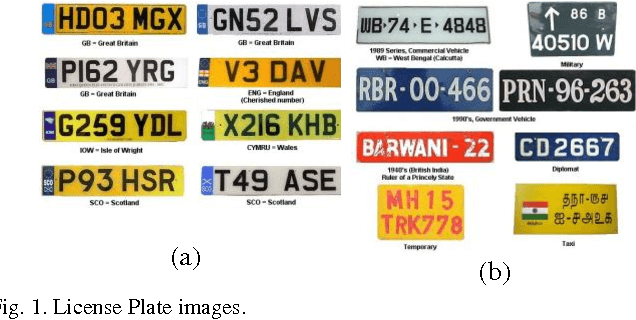
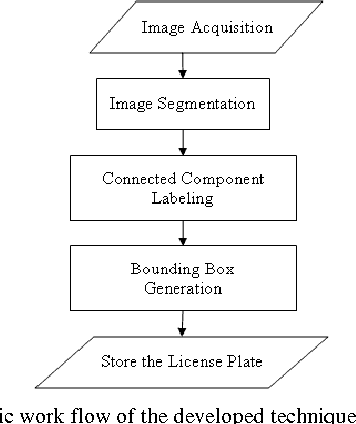
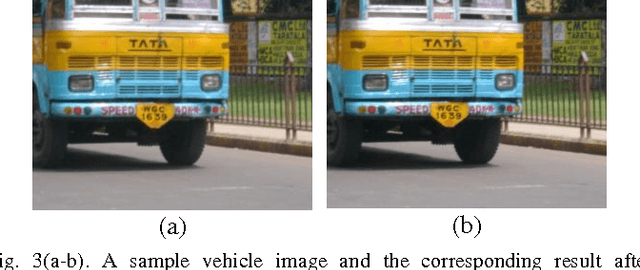
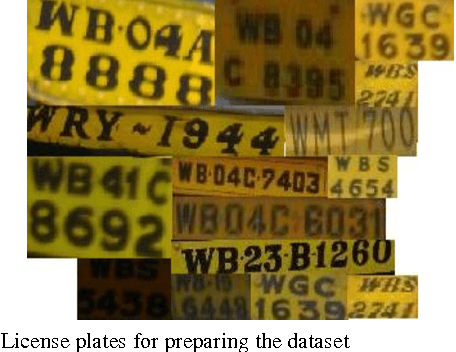
Abstract:Automatic License Plate Recognition (ALPR) is a challenging area of research due to its importance to variety of commercial applications. The overall problem may be subdivided into two key modules, firstly, localization of license plates from vehicle images, and secondly, optical character recognition of extracted license plates. In the current work, we have concentrated on the first part of the problem, i.e., localization of license plate regions from Indian commercial vehicles as a significant step towards development of a complete ALPR system for Indian vehicles. The technique is based on color based segmentation of vehicle images and identification of potential license plate regions. True license plates are finally localized based on four spatial and horizontal contrast features. The technique successfully localizes the actual license plates in 73.4% images.
Development of an automated Red Light Violation Detection System (RLVDS) for Indian vehicles
Jan 22, 2015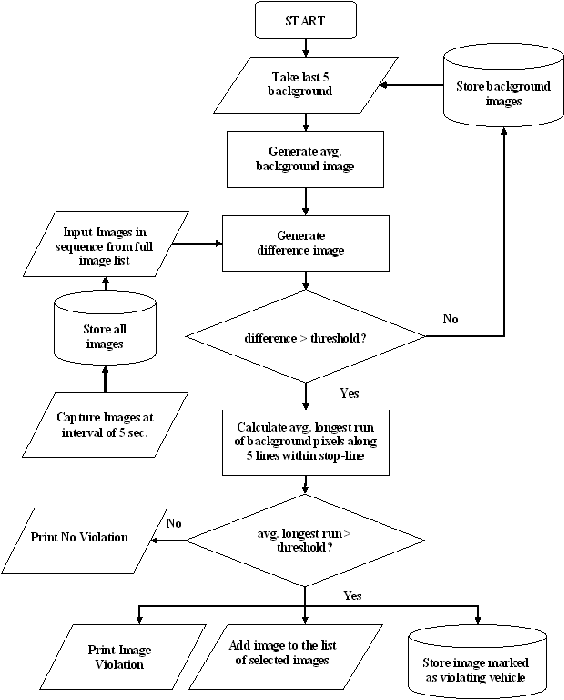
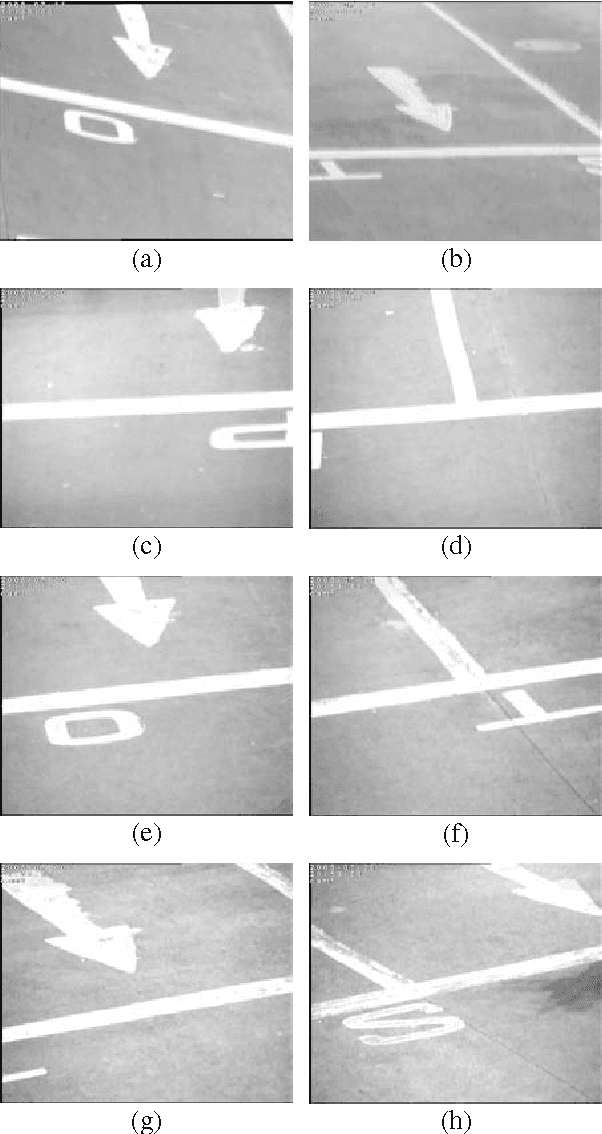
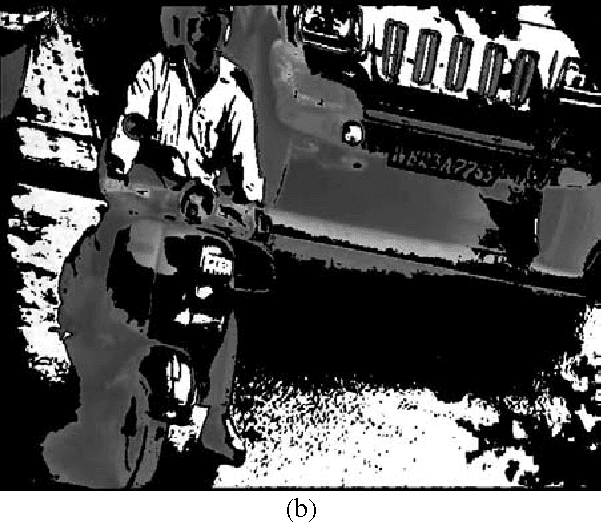
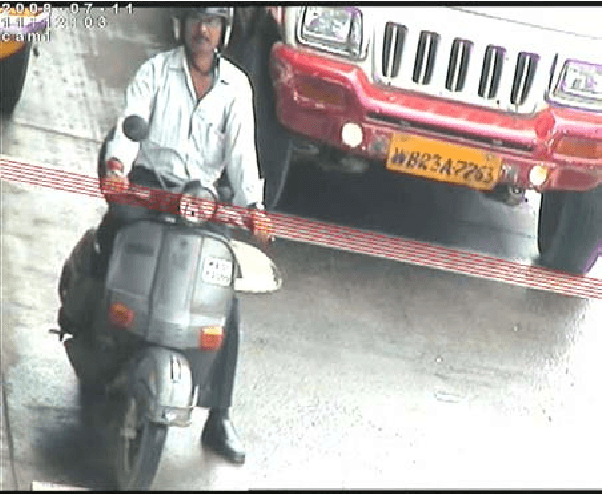
Abstract:Integrated Traffic Management Systems (ITMS) are now implemented in different cities in India to primarily address the concerns of road-safety and security. An automated Red Light Violation Detection System (RLVDS) is an integral part of the ITMS. In our present work we have designed and developed a complete system for generating the list of all stop-line violating vehicle images automatically from video snapshots of road-side surveillance cameras. The system first generates adaptive background images for each camera view, subtracts captured images from the corresponding background images and analyses potential occlusions over the stop-line in a traffic signal. Considering round-the-clock operations in a real-life test environment, the developed system could successfully track 92% images of vehicles with violations on the stop-line in a "Red" traffic signal.
A novel scheme for binarization of vehicle images using hierarchical histogram equalization technique
Jan 22, 2015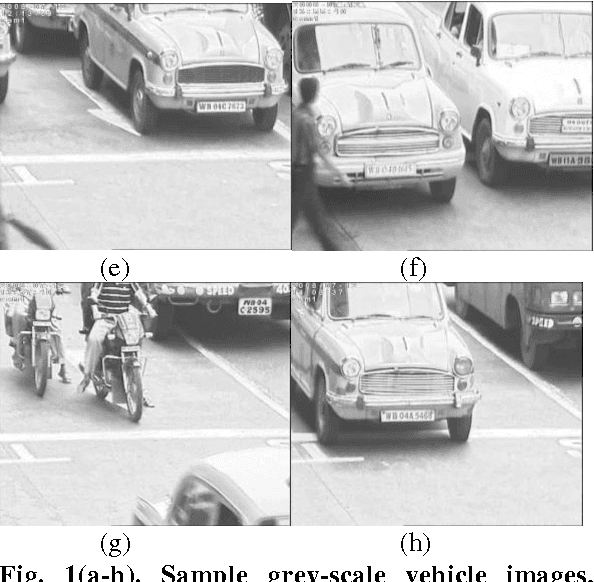
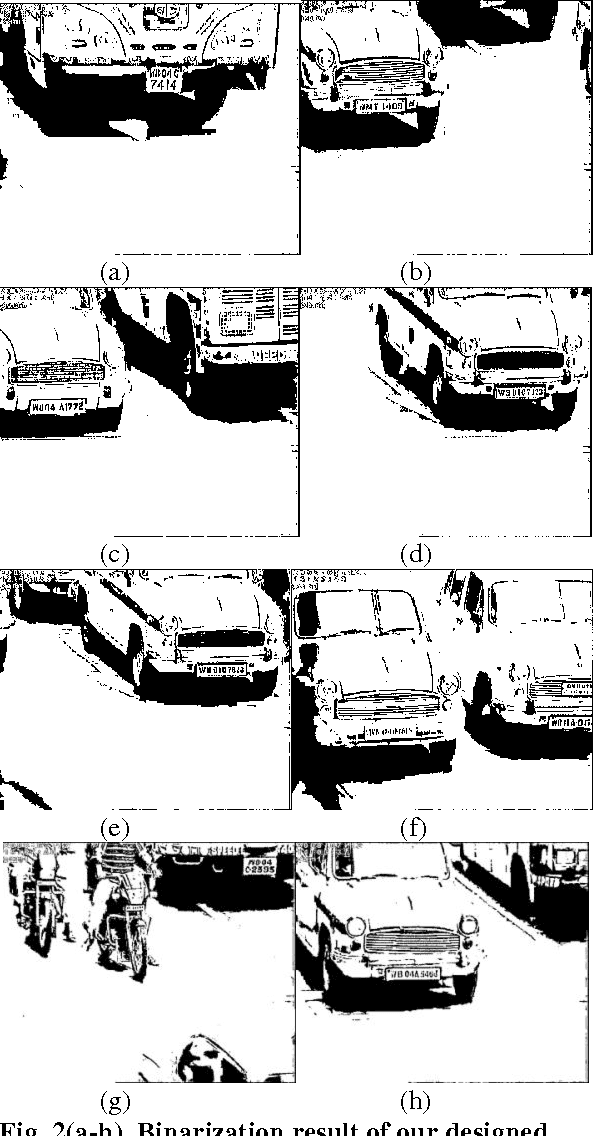
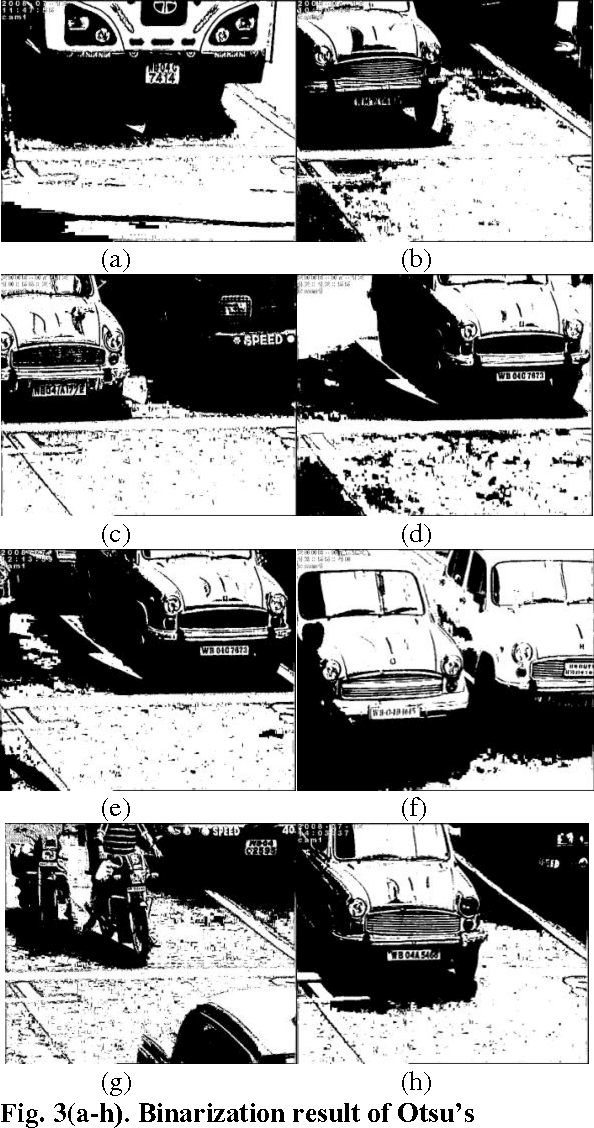
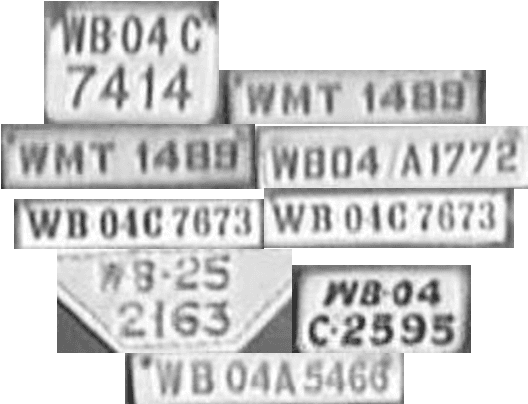
Abstract:Automatic License Plate Recognition system is a challenging area of research now-a-days and binarization is an integral and most important part of it. In case of a real life scenario, most of existing methods fail to properly binarize the image of a vehicle in a congested road, captured through a CCD camera. In the current work we have applied histogram equalization technique over the complete image and also over different hierarchy of image partitioning. A novel scheme is formulated for giving the membership value to each pixel for each hierarchy of histogram equalization. Then the image is binarized depending on the net membership value of each pixel. The technique is exhaustively evaluated on the vehicle image dataset as well as the license plate dataset, giving satisfactory performances.
 Add to Chrome
Add to Chrome Add to Firefox
Add to Firefox Add to Edge
Add to Edge